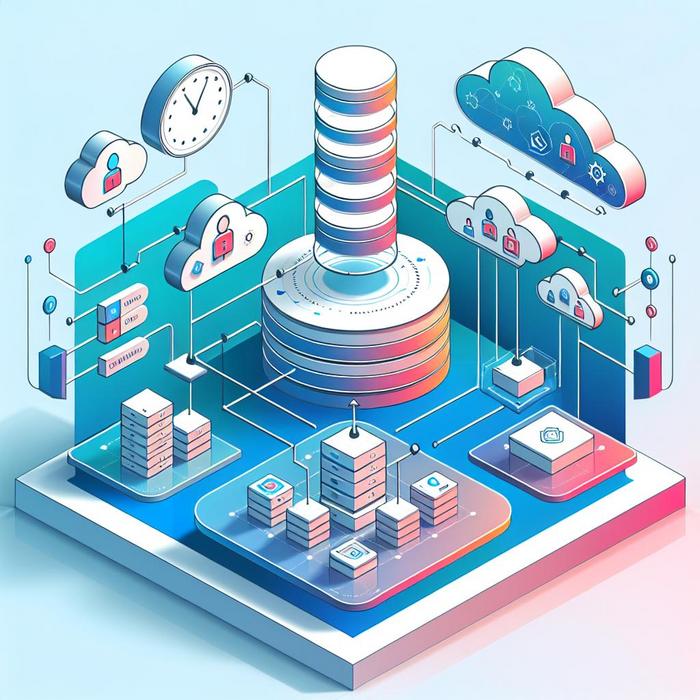Table of Contents Hide
Future-Proofing with Data Observability Architecture
 6 MIN. READING
6 MIN. READING
Is Your Organization Harnessing the Power of Data Observability Architecture?
Creating a robust infrastructure that pulls together real-time data from diverse sources, and making it readily accessible, remains a top priority for IT leaders. This all-encompassing quest for operational efficiency centers on the unique process of Database Virtualization.
Database Virtualization: The Silent Revolution in Data Accessibility
At its core, Database Virtualization involves establishing a virtual data layer that seamlessly integrates data from disparate sources, delivering unified access without the need for data replication or movement. The real-time access to data it provides is a game-changer for testing, development, and analytical operations, enhancing efficiency and speed.
Data Anonymization: A Key Component
There is no question that data anonymization is a critical aspect of comprehensive database virtualization. It’s a robust technique that replaces sensitive information with fictional though realistic data, ensuring compliance with stringent data regulations. As an advanced data solution, data anonymization retains the valuable structure and characteristics of real data, enabling meaningful analysis without compromising privacy.
Why Data Observability Architecture Strikes a Balance
The call for integrating data anonymization into Database Virtualization brings us to the exciting realm of Data Observability Architecture. This emerging, avant-garde approach to data management not only makes data accessible but also easy to monitor, control, and optimize.
Considered the next frontier in data management, Data Observability Architecture overrides traditional barriers, enabling data architects and IT leaders to derive actionable insights. It facilitates the identification of bottlenecks, data anomalies and operational inefficiencies, enabling strategic enhancements that directly influence the bottom line.
Navigating the Transition to Data Observability Architecture
Transitioning to a Data Observability Architecture can seem overwhelming. However, with careful planning and a firm grasp of your organizational data landscape, the process can be relatively straightforward. Here are a few steps to consider:
• Identify your current data sources and understand how they feed into your existing database infrastructure.
• Review and fine-tune your database virtualization strategies to enhance virtual data layer creation.
• Assess your data anonymization techniques, ensuring they align with modern data regulations.
• Finally, incorporate a reliable Data Observability strategy into your overall data management system.
Prepping for a Future-Proof Data Management Strategy
Innovative strategies like Database Virtualization and Data Observability Architecture offer a pathway to staying ahead of the curve. They lay a solid foundation for a robust data infrastructure that optimizes operations, streamlines testing and analytics, and ensures compliance with data regulations, all while keeping up with rapid technological advancements.
In the end, it’s about embracing these cutting-edge techniques and integrating them into your data management toolkit. This is how IT leaders and strategists can truly future-proof their organizations, leveraging data as a strategic asset to fuel sustainable growth.
Explore the benefits of a Data Catalogue to further enhance your database virtualization and data observability architecture strategies.
It’s a journey to excellence in the realm of data management, with each step bringing you closer to harnessing the full potential of your data. So, are you ready to embark?
The Power of Evolved Data Provisioning Techniques
As data sources continue to diversify and grow in volume, obtaining high-quality and representative data sets for analysis becomes increasingly challenging. What’s the solution? Deploying evolved data provisioning techniques that support real-time data delivery across your organization.
Data is arguably the most crucial asset for any business, and efficient data provisioning processes ensure that your analysts, developers, and managers always have the right data at the right time. With enhanced techniques, such as creating a virtual data layer, you can deliver crucial data to business decision-makers seamlessly, in real-time, enhancing both the efficiency and speed of your operations.
The Shift Towards Real-time Data Accessibility
One thing is clear – businesses that prioritize real-time data accessibility stand to gain an edge over their competitors. By ensuring that accurate, relevant data is readily available in real-time, organizations can respond faster and more accurately to changing market dynamics, driving a competitive advantage.
Real-time data access is fundamental not only for everyday operation but also for future planning and strategy. It enables businesses to identify opportunities, avoid pitfalls, and respond to challenges promptly and effectively. Through database virtualization, this real-time data access is further facilitated, providing immediate access to insights that can change the course of a business.
The Role of Data Anonymization in Data Provisioning
Where data privacy and security are paramount, data anonymization plays a pivotal role in any data-driven organization. It replaces identifiable, sensitive data with artificial, yet realistic equivalents, ensuring compliance with data regulations.
With the correct implementation, data anonymization in data provisioning can preserve the utility of the data while still maintaining privacy. Thus, this responsible, ethical use of data safeguards sensitive information while promoting increased transparency.
Leveraging Strategic Tools for Improved Data Provisioning
Utilizing the correct tools and platforms can significantly simplify your data provisioning processes. Incorporating these technologies into an integrated data platform enables systematic extraction, transformation, and loading processes, ensuring prompt and consistent data availability.
Your set of tools need to combine efficient data extraction capabilities from various sources, powerful transformation features to ensure compatibility and consistency, and robust loading functionalities that can manage high volumes of real-time data.
Moving Towards an Agile, Iterative Approach
Organizations must be agile and iterative, quickly adapting to changes in requirements and technologies. An agile, iterative approach to data provisioning involves continuously reviewing and improving the processes involved.
This continuous improvement and adaptation can range from enhancing data quality, ensuring timely data access, to updating methodologies to incorporate newer and more efficient techniques. In essence, it encourages your organization to stop viewing data provisioning as a fixed, one-time project, but rather as an ongoing process that evolves with your business and technological landscape.
Seamlessly Integrating Data Provisioning Into Your Data Observability Architecture
With the rising importance of both data provisioning and observation, organizations are now seeking strategies to effectively integrate these two realms. A successful integration leads to a richer, more unified view of your data landscape, enabling smoother and more efficient operations and decision-making.
The key lies in finding the right balance between providing timely, high-quality data and maintaining total visibility over data sources, usage, and anomalies. An effective Data Observability Architecture – one that combines database virtualization, efficient data provisioning techniques, and robust data anonymization strategies – can ensure that your organization remains at the forefront of data management sophistication.
Embrace this new era of database virtualization and data observability to stay a step ahead in your industry.
The transformative power of advanced data methodologies in the hands of IT leaders and strategists is undisputed. Now is the time to take charge and make the necessary strides towards a data-rich future. Are you poised and ready for this evolution?


